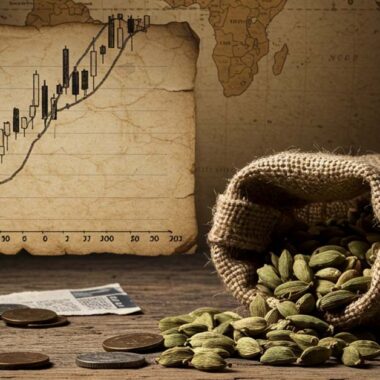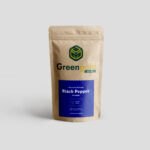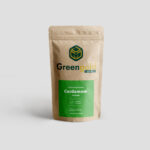Government policies play a significant role in shaping agricultural markets across the globe, and the cardamom industry is no exception. As one of the most prized and expensive spices, cardamom is highly susceptible to changes in trade regulations, subsidies, tariffs, and market interventions that stem from government decisions. In this blog, we will explore how different government policies can directly or indirectly influence the prices of cardamom, affecting both farmers and consumers. 📈🌍
🏛️ How Government Policies Influence Cardamom Prices
1. Export and Import Regulations
Government policies regarding exports and imports can have a direct impact on cardamom prices. Countries that are major producers and exporters of cardamom, such as India and Guatemala, often have policies that regulate how much cardamom can be exported, influencing the supply in international markets.
- Export Restrictions: Governments may impose export restrictions or quotas during years when cardamom is in short supply, ensuring that there is enough for the domestic market. This can lead to higher prices due to reduced supply in the global market. 📉🔒
- Import Tariffs: Some countries impose import tariffs on cardamom, making it more expensive for consumers. For example, if the government of a country with limited domestic production raises import duties on cardamom, imported cardamom will become costlier, leading to a spike in prices. 🌍💰
2. Subsidies for Farmers
Subsidies offered by the government to cardamom farmers can significantly impact production costs and, in turn, the price of cardamom.
- Price Support Policies: Governments often introduce price support mechanisms for farmers to ensure a stable income for cardamom producers. This can stabilize prices in domestic markets but may also affect global competitiveness. In India, for instance, the government offers certain financial incentives and subsidies to cardamom farmers to ensure their profitability. 💵🌱
- Input Subsidies: Subsidies on fertilizers, irrigation, and pest control can help reduce the production costs of cardamom, leading to an increase in supply and a potential decrease in prices. However, if the government decides to cut these subsidies, the increased production costs may result in higher prices for cardamom. 🌾💡
3. Monetary and Fiscal Policies
Monetary and fiscal policies, such as interest rates, taxation, and currency stability, can also influence cardamom prices indirectly.
- Interest Rates: Higher interest rates can make it more expensive for cardamom farmers to borrow money for purchasing inputs or expanding their farms. As a result, reduced production may push prices higher. 📊💵
- Currency Fluctuations: The exchange rate between the local currency and international currencies can affect cardamom exports. For example, if the Indian rupee depreciates against the dollar, Indian cardamom becomes cheaper for foreign buyers, increasing demand and driving up prices in the domestic market. 💱📈
4. Price Control Policies
In some countries, the government may step in to control the price of essential agricultural products to keep them affordable for consumers. While this is less common with premium products like cardamom, it is possible for governments to intervene if they perceive significant volatility in the market.
- Government Price Fixing: If cardamom prices rise too steeply, the government might intervene by implementing price caps or setting a maximum price to protect consumers. However, this can discourage farmers from increasing production, as it limits their profitability, and could lead to shortages. ⚖️🚫
🏞️ Policies That Support Sustainable Cardamom Farming
As concerns over sustainability and environmental protection grow, governments have also introduced policies aimed at promoting sustainable farming practices, which can influence cardamom production and pricing.
1. Incentives for Organic Farming
Governments around the world are increasingly encouraging organic farming practices due to their environmental benefits. Organic cardamom farming, while requiring more labor and care, can command a higher price in the market due to the rising demand for organic products.
- Tax Benefits for Organic Farmers: In some countries, farmers who switch to organic farming practices may receive tax breaks or subsidies. This can reduce production costs and create a higher supply of organic cardamom at competitive prices. 🌿💚
2. Sustainability Certification and Export Preferences
Some governments offer sustainability certifications for crops grown using eco-friendly practices. Cardamom farmers who adopt sustainable practices can often get better prices in international markets where sustainability is highly valued.
- Sustainable Export Preferences: Countries with government-backed sustainable farming policies may receive preferential access to global markets, where consumers are willing to pay a premium for sustainably grown products. 🌍💡
🌿 How Cardamom Prices are Affected by Government Intervention: A Case Study
📊 India: Price Regulation and Export Controls
India, as the world’s largest producer and exporter of cardamom, provides an excellent example of how government policies affect cardamom prices.
- Price Support and Export Restrictions: The Indian government has introduced price support schemes to help farmers cope with fluctuating cardamom prices. During periods of low prices, the government has been known to intervene and purchase cardamom directly from farmers to stabilize the market.
- Export Policies: India’s cardamom industry is subject to export controls that can impact the price of cardamom on the international market. The government may impose restrictions on exports during periods of low domestic supply, leading to price hikes globally. 📉📦
🌍 Guatemala: Export Preferences and Tax Benefits
Guatemala, as the second-largest producer of cardamom, is another example of how government policies impact cardamom prices.
- Export Incentives: The Guatemalan government has introduced tax incentives for cardamom exporters, making the spice more affordable in international markets. This has helped Guatemalan cardamom reach markets across the world, contributing to its rising share in the global market. 🚢🌎
- Sustainability Initiatives: The Guatemalan government also supports sustainable farming practices through initiatives such as promoting organic farming and offering training for smallholder farmers, which enhances the quality and price competitiveness of their cardamom. 🌿👩🌾
💡 Conclusion
Government policies have a profound impact on cardamom prices, affecting both the domestic and global market. Whether through export controls, subsidies, price support mechanisms, or tax incentives, these policies shape the economic landscape for cardamom farmers and influence the price consumers pay for this prized spice. 📈🌍
As the global demand for cardamom continues to grow, it will be essential for governments to adopt policies that not only support farmers but also ensure sustainable farming practices and fair pricing for both producers and consumers. 🌿⚖️












